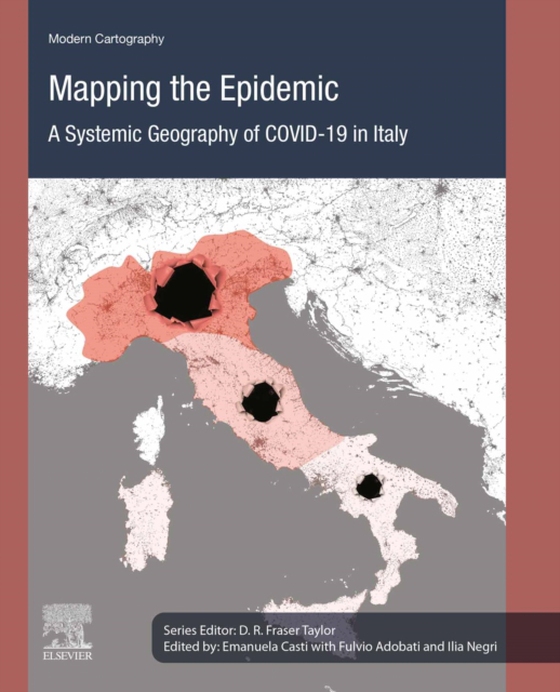
Mapping the Epidemic e-bog
1167,65 DKK
(inkl. moms 1459,56 DKK)
Mapping the Epidemic: A Systemic Geography of COVID-19 in Italy provides a theoretical-methodological framework based on space-time analysis to map and interpret the set of factors that could have contributed to the spread of COVID-19, as well as a reflexive cartographic mapping visualizing the virus's dynamics. After an introduction that constitutes the theoretical anchor of the work carried o...
E-bog
1167,65 DKK
Forlag
Elsevier
Udgivet
27 august 2021
Længde
252 sider
Genrer
RGV
Sprog
English
Format
epub
Beskyttelse
LCP
ISBN
9780323910620
Mapping the Epidemic: A Systemic Geography of COVID-19 in Italy provides a theoretical-methodological framework based on space-time analysis to map and interpret the set of factors that could have contributed to the spread of COVID-19, as well as a reflexive cartographic mapping visualizing the virus's dynamics. After an introduction that constitutes the theoretical anchor of the work carried out both with respect to territorial analysis and the use of reflexive cartography, the book discusses the role played by reflexive cartography in research on the COVID-19 pandemic conducted by an Italian university working group dealing with reticularity and the territorial fragilities that have influenced the spread. The data, subjected to analysis, are translated into reflexive cartography as a tool for restitution and investigation of the territorial dynamics. Each chapter consists of detailed information in which the European context of data analysis is illustrated, to then investigate the Italian territory and focus on the case of Lombardy and, in particular, of Bergamo as the epicenter. The book addresses the theoretical and methodological approaches of mapping the epidemic in Italy and the importance of cartography in the outbreak response, as well as including data accounting for contributing factors such as atmospheric pollution and infection rate, population distribution and major mobility corridors, and measures adopted to contain the outbreak, by implementing mapping at the regional Lombard, national, and European levels. Mapping the Epidemic: A Systemic Geography of COVID-19 in Italy uses an interdisciplinary approach that highlights the key role of geography and cartography in providing usable data and conclusions on the virus outbreak and will be valuable for researchers and professionals in the fields of geography, GIS, and spatial mapping, as well as statisticians working on mapping outbreaks and epidemiological scientists needing mapping data on the virus. Details reflexive mapping of the COVID pandemic, giving an interpretation that explains the epidemic's variable complexity and visualizes it Provides a space-time approach, based on a database from the beginning of the Italian emergence to the decline phase, showing the virus spread intensity and speed in relation to socio-territorial factors Is complementary to studies carried out in the biomedical domain, referring to the results of these studies in an original and innovative way, envisaged through cybercartography
 Dansk
Dansk

